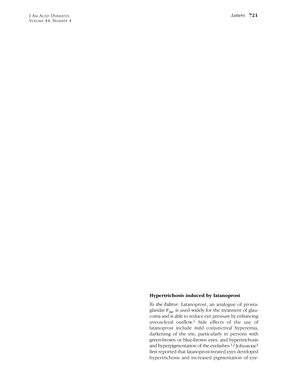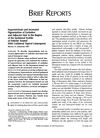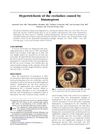Hypertrichosis Induced by Latanoprost
April 2001
in “
Journal of The American Academy of Dermatology
”
latanoprost hypertrichosis prostaglandin F2α analogue glaucoma topical latanoprost skin discoloration increased iris pigmentation cutaneous blood flow hormonal metabolism hair follicles male-pattern baldness androgenic alopecia Xalatan excessive hair growth eye drops skin darkening iris color change blood flow hormone changes hair roots baldness hair loss

TLDR Latanoprost, a glaucoma medication, caused excessive eyelid hair growth in many patients.
In a study examining the side effects of latanoprost, a prostaglandin F2α analogue used to treat glaucoma, it was found that the drug induced hypertrichosis (excessive hair growth) in a significant number of patients. The study involved 317 Japanese patients with glaucoma (119 men and 198 women, aged 14-96 years, mean age 67 years) who were treated with topical latanoprost once a day for an average of 4 months. Of these patients, 244 (77.0%) developed hypertrichosis of the upper and/or lower eyelids, particularly on the lateral lower eyelid, with no significant sex difference in the occurrence of this side effect. Additionally, 128 patients (40.4%) experienced skin discoloration of the eyelids. Increased iris pigmentation, a side effect noted in other studies, was not remarkable in this group, possibly due to the brownish eyes common in Japanese individuals. The mechanism behind latanoprost-induced hypertrichosis is not fully understood, but it may involve increased cutaneous blood flow or altered hormonal metabolism around hair follicles. The study also suggested that latanoprost could have therapeutic potential for common hair disorders like male-pattern baldness, but further research is needed to clarify the mechanisms and develop treatment strategies for androgenic alopecia.


